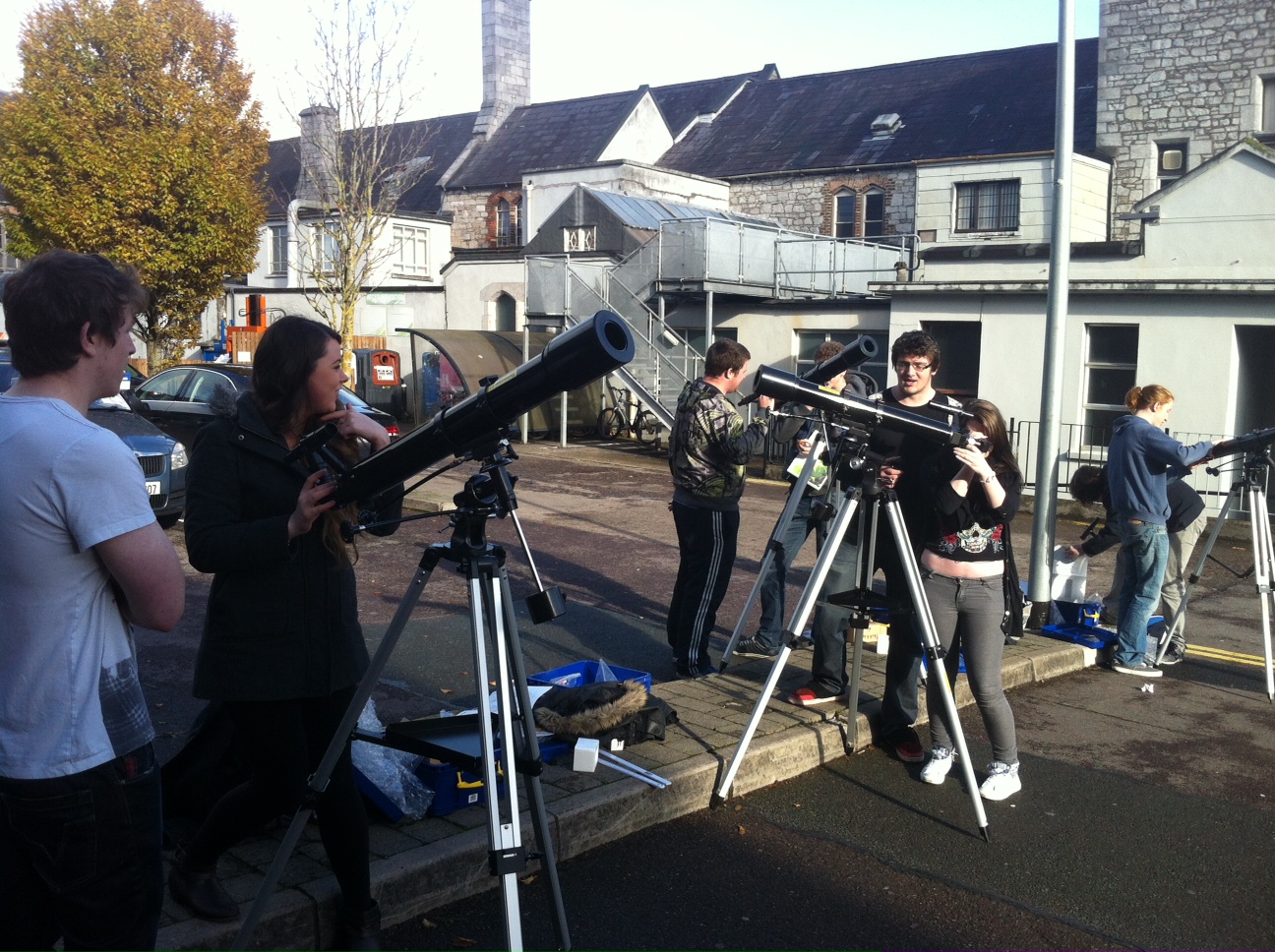- Home
- Semester and Timetable Information
- Study Physics
- Our Research
- Our People
- Careers and Alumni
- Seminars, News and Events
- Outreach and School Resources
- About the School
- What is Physics
- The Crawford Observatory
- Frequently Asked Questions
- UCC Futures Quantum & Photonics
- Supports
Telescope Open Practical
At the end of the semester each student carries out a practical where they can display the experimental skills they have developed over the module. Students are given access to telescopes are asked to observe and measure multiple celestial objects.
Part 1: Observations of the Sun
(1) Setup the telescope and observe the Sun using the projection method . Never look directly at the sun, with or without a telescope.
The projection method is where the image of the sun is shone through the telescope onto a piece of paper where measurement can be taken.
(2) Work out the diameter of the Sun using the known optical features of your telescope, calculate the overall power emitted by the Sun and compare this with the literature value.
Part 2: Observations of the Moon
(1) Set up the telescope to observe the Moon and obtain an image of the lunar surface.
(2) Using this image, and knowing the angular size of the Sun from Part 1 (and remembering the phenomenon of Solar Eclipses) calculate the number of arc seconds per pixel element in the camera, for the eyepiece combination you have used.
(3) Using your results from (2) calculate the angular diameters of two of the largest craters you can see – e.g. Tycho, Plato, etc. Use the known EarthMoon distance to estimate the radius of these features in km. What is the size (in km) of the smallest crater you can see ? To identify these features, feel free to use appropriate online lunar maps (e.g. https://apps.apple.com/us/app/moon-globe/id333180321 for an iphone app)
Part 3: Observations of other Celestial Objects.
(1) From any appropriate online resource, find the angular diameters of Jupiter and Venus. Using the excellent planetarium software at www.stellarium.org find which of these planets is visible, and try to obtain an image as discussed in Part 2. Y
(2) Discuss the image you observe: Can you resolve the disk of Jupiter, or the cresent of Venus ? If you can observe Jupiter, can you see some of its moons ? Can you record images of these ? Does the angular size of the planet agree with the calculation from (1), taking the magnification of the lens system into account ?
(3) Finally, try to obtain an image of a bright star in the sky. Discuss what factors of your experimental set up make this observation particularly difficult.

